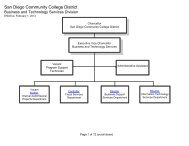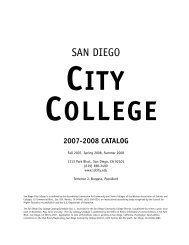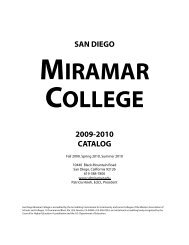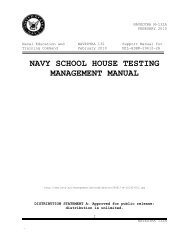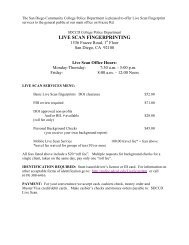NAVY SCHOOL MANAGEMENT MANUAL
NAVY SCHOOL MANAGEMENT MANUAL - AIM
NAVY SCHOOL MANAGEMENT MANUAL - AIM
- No tags were found...
Create successful ePaper yourself
Turn your PDF publications into a flip-book with our unique Google optimized e-Paper software.
When a student is accelerated, the course supervisor is<br />
responsible for ensuring that a CeTARS Schoolhouse Person<br />
Event (PEVT) Code is assigned and provided to TSC/DET SCO<br />
for input into CeTARS. Total number of accelerations for a<br />
course will be tracked and summarized as a training quality<br />
indicator.<br />
1.4. Setback. The idea is for a student to complete training<br />
in the time scheduled. A setback occurs when a student is<br />
unable to complete the training in the designated time.<br />
Setbacks are classified as either academic or non-academic, in<br />
addition to increase the student's pipeline. Because setbacks<br />
are costly, they should be granted only after all other forms of<br />
remediation have been exhausted and when there is an indication<br />
that a setback is in the best interest of the military and<br />
student.<br />
<br />
<br />
<br />
<br />
<br />
Academic setbacks for "A" and ”C” school students may be<br />
initially granted by the course supervisor as a result of a<br />
preventative counseling session and only after all means of<br />
remediation and retesting have been used with inadequate<br />
results. Subsequent academic setbacks will occur only<br />
because of an Academic Review Board’s (ARB) recommendation.<br />
All decisions to academically set back a student from other<br />
type courses (i.e., “D” and “G”), will be based on a<br />
decision by supervisory personnel above the level of the<br />
immediate instructor. Schoolhouse administrative<br />
procedures resulting in automatic academic setbacks are not<br />
authorized. Students designated as academic setbacks will<br />
be allowed to repeat only that portion of a course for<br />
which they have failed to achieve the objective(s).<br />
Non-academic setbacks may occur when the student is unable<br />
to complete the material due to illness or special<br />
circumstances outside the control of the course or student.<br />
The decision to set back non-academically is a management<br />
decision.<br />
Training managers and course supervisors are responsible<br />
for evaluating the causes for setbacks and taking action to<br />
lower this rate without lowering training standards.<br />
When a student is set back, the course supervisor should<br />
inform student control so the appropriate PEVT code can be<br />
found/used to support the TSC/DET SCO for input into<br />
CeTARS.<br />
If a student in a high-risk course is set back due to a<br />
medical problem, which may result in future problems while<br />
3-5<br />
NAVEDTRA 135C



